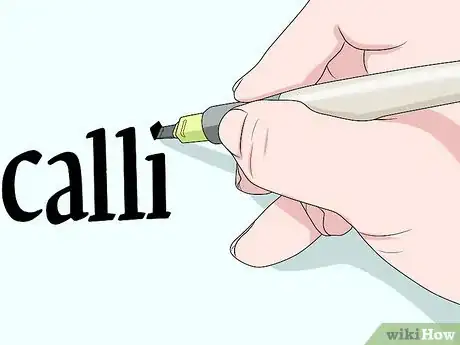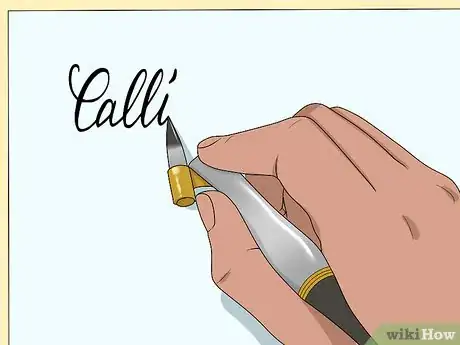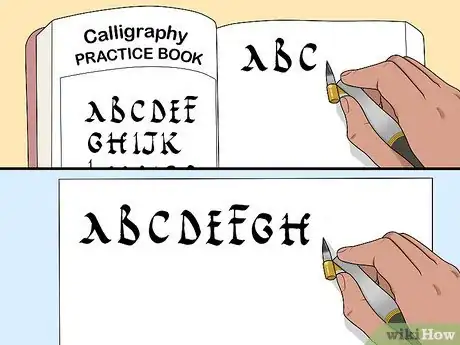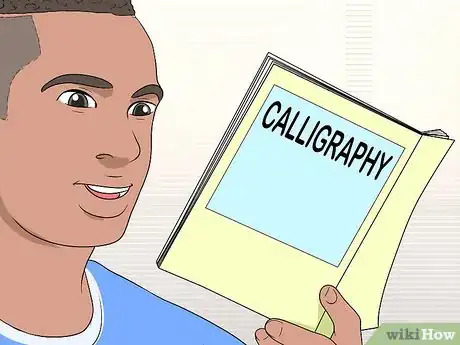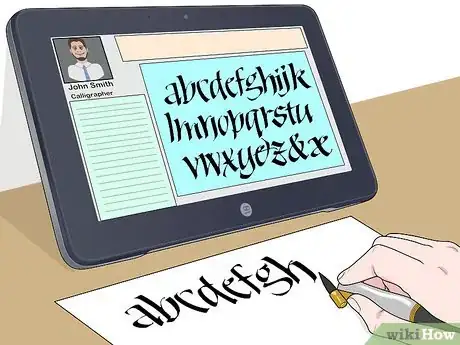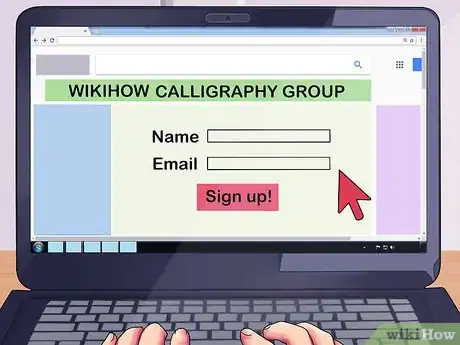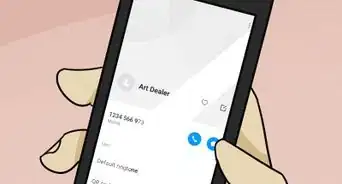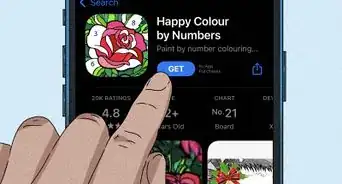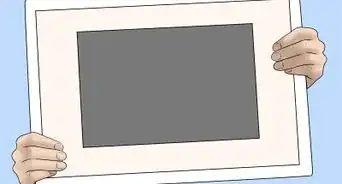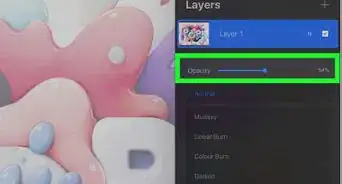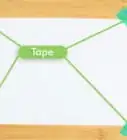This article was co-authored by wikiHow Staff. Our trained team of editors and researchers validate articles for accuracy and comprehensiveness. wikiHow's Content Management Team carefully monitors the work from our editorial staff to ensure that each article is backed by trusted research and meets our high quality standards.
This article has been viewed 23,661 times.
Learn more...
Calligraphy, which translates as “beautiful writing” in Greek, is the practice of creating artistic, elegant letters on the page. It can be a little tricky at first, but once you master the basics you’ll be able to practice almost anywhere. While mastering basics, get involved with other calligraphers for encouragement, support, and inspiration. If you find this hobby to your liking, you can improve with practice sheets and calligraphy books.
Steps
Learning the Basics
-
1Learn broad edged calligraphy for a bold style. Broad edge calligraphy is one of the two main styles in Western calligraphy. It is characterized by bold, disjointed strokes. Though striking, artistic touches can be difficult with the pens used in this style.
- The pens used in broad edged calligraphy can only be pulled when writing, which limits your range of artistic motion somewhat.[1]
- With enough practice, many of the techniques used in pointed pen calligraphy can be imitated even with a broad edged pen.
-
2Focus on pointed pen calligraphy for creative results. Pointed pen is the second (and more common) style in Western calligraphy. This style is smoother, more responsive, and allows more creative freedom.
- Though generally considered more difficult, this style will yield the flowing calligraphy most familiar to people.
- Learning more than one style at a time will make it easier to confuse the unique characteristics of each, so you might want to master them one at a time.
Advertisement -
3Buy a calligraphy starter kit. Along with your pen, you’re also going to need ink, paper, and nibs (writing tips) if you’re using a straight or oblique holder. These supplies are often bundled together in calligraphy starter kits sold online and in hobby stores.
- Fountain pens are versatile and good for on-the-go calligraphy, but straight and oblique holders for nibs (which are then dipped in ink) are the traditional standard.
- Holders generally require nibs, and even fountain pen nibs will wear out with time. Some nibs might work better for you than others, but Nikko G nibs are a favorite among calligraphers.
- Purchase smooth, non-fibrous paper, like Rhodia Lined Paper. Most kinds of cartridge paper work as well and are relatively inexpensive.
- Each ink will have unique features. Walnut ink is one of the easiest to use, but Iron Gall ink and Walker’s Copperplate are two popular brands to keep in mind.
-
4Familiarize yourself with different calligraphy alphabets. Alongside the two styles of calligraphy there are uncountable alphabets. In calligraphy, alphabets (also called scripts) are the equivalent of font. Each script has its own unique features. Six common alphabets you might look into include:
- Roman Rustic Capitals imitate the grand capitals on ancient Roman structures.
- Uncial is easy to read and conveys a serenity quality. Try it with poems and quotes.
- Gothic, textura quadrata is bold and striking. It works well with titles and headings.
- Roundhand is a simple style that is easy to pen and read.
- Italic, slanted is easy to read and is elegant without being over the top.
- Copperplate imitates the flowing, looping style of cursive lettering.[2]
-
5Buy and use a calligraphy practice book. Calligraphy books are available at most bookstores, hobby stores, and online. As a cheaper option, you could print out practice materials from a website online. Use these materials to practice the basics.
- The stroke order for alphabets oftentimes comes with alphabet practice resources. As you become more comfortable with calligraphy, stroke order will become more intuitive.
-
6Get a feel for stroke order. Generally, each letter is made up of a combination of different strokes. These strokes sometimes differ slightly from alphabet to alphabet. To make mastering a script easier, perfect the basic strokes before attempting full letters or words.
- Generally, upstrokes should be thinner than downstrokes. Try to imitate stroke examples as closely as possible to improve your muscle memory and writing quality.
Improving Your Skill
-
1Use practice books or sheets. Practice books can be bought at hobby stores or online, though many calligraphy sites offer free practice sheets for common alphabets online. Practice books/sheets give you the chance to trace examples, which will improve your muscle memory and freehand skill.[3]
- When printing practice sheets, make sure you use non-fibrous paper.
- Some sites may have images of calligraphy practice instead of sheets you can download. Take a screen shot and print the image to make your own practice sheet.
-
2Practice regularly. Unless you’re a natural talent, it’ll probably take you a while practicing before you can imitate the beautiful flowing scripts that calligraphy is known for, but hang in there. Keep old practice sheets so you can compare them with more recent work and track your improvement.[4]
- The regular, intentional motions of calligraphy can be very calming, which is another benefit of practice. When feeling emotional, try practicing.
-
3Read calligraphy books. There are many books that chronicle the changes in various calligraphy alphabets. These books also offer a great deal of food for thought where design is concerned, making them a valuable resource for artists, designers, editors, and more.
- Find calligraphy books at your local book or hobby store. If the selection is scant, look online. Many popular online calligraphers offer reading suggestions, like Historical Source Book for Scribes by Brown and Lovett.[5]
-
4Imitate your favorite calligraphers. Once you have the basics under your belt, you can start imitating your favorite scripts to compose messages, label letters, address wedding invitations, and so on. Snap pictures of cool alphabets you see on-the-go so you can try to imitate them later.
Getting More Involved
-
1Become a member of calligraphy websites. Recently, the art of calligraphy has enjoyed a return to popularity.[6] It shouldn’t be hard to find an online site dedicated to this art. Check the dates on posts first though – you’ll want to prioritize sites and groups with recent activity.
- Many calligraphy sites offer forums where members can talk about their work or share their achievements with other calligraphers.
- You can always join a calligraphy workshop or a calligraphy retreat, often offered on sites, so you can focus and practice without distraction.[7]
-
2Join a local calligraphy group or club. There are many different aspects to proper calligraphic technique, some of which are hard to be aware of on your own. Universities and community centers frequently have clubs you can join for some person-to-person interaction and advice.
- Calligraphy is a popular art in many Asian cultures. In some areas, Asian immigrants come together in public spaces, like parks, to do calligraphy publicly.
-
3Get your friends interested with a calligraphy night. Get some spare pens together and a fresh ream of paper – it’s time to invite some of your pals to join in. Offer advice and encouragement to help your friends hurdle difficult aspects more quickly.
- Put on a movie or some music to make your calligraphy night more fun. You might even turn this to a game, where each person writes phrases from the movie/music in calligraphy.
-
4Connect with other calligraphers through social media. Instagram, especially, is a popular platform where ace calligraphers show off their work. Follow these people for inspiration. When you’re ready, you can post your own projects so you can get some feedback.[8]
- Online social platforms, like Facebook, will likely have a calligraphy group where you can make friends with others.
Things You’ll Need
- Calligraphy pen (and ink)
- Nibs (for straight or oblique holders; Nikko G brand recommended)
- Paper (calligraphy paper recommended)
- Practice book (or practice sheet printouts)
References
- ↑ http://calligraphyforbeginners.com/
- ↑ http://www.calligraphy-skills.com/calligraphy-alphabets.html
- ↑ http://www.calligraphy-skills.com/easy-calligraphy.html
- ↑ http://www.calligraphy-skills.com/how-to-write-calligraphy.html
- ↑ http://www.calligraphy-skills.com/calligraphy-alphabets.html
- ↑ http://www.newyorker.com/culture/cultural-comment/calligraphy-stars-instagram
- ↑ https://thepostmansknock.com/beginners-guide-modern-calligraphy/
- ↑ http://www.newyorker.com/culture/cultural-comment/calligraphy-stars-instagram
